Fresh coats of paint can really make all the difference in a room. If you're thinking about painting your ceiling, you might be wondering whether the paint you use should be flat or eggshell. Well, we've researched this question in-depth, and have the answer for you.
When it comes to painting your ceiling, using a flat finish paint is the more common choice. However, both flat or eggshell paint will work.
So, we've told you that flat paint is the more popular choice when painting your ceiling, but keep reading as we discuss the differences between the two. We'll also give you a few reasons why you might pick one over the other. Finally, we will answer some other questions you might have about painting your ceiling.
Flat or Eggshell?
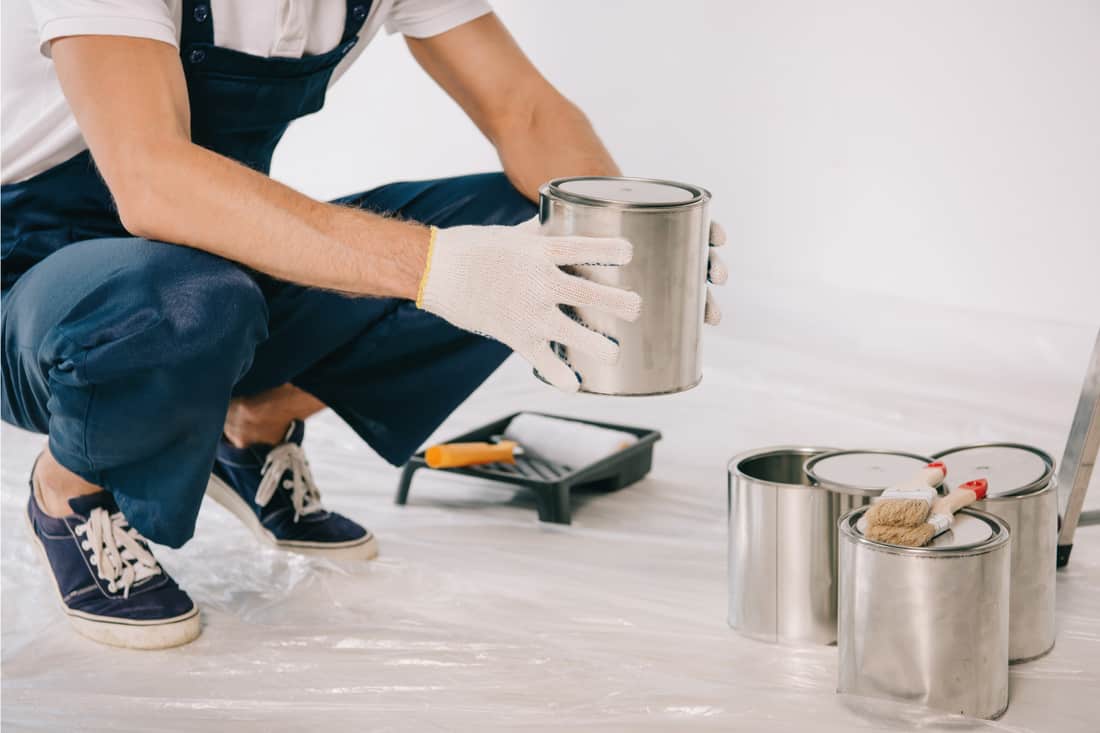
When browsing your local hardware store for your paint, you might have noticed that there are four different finishes. There is flat, eggshell, semi-gloss, and gloss. It is highly unlikely that you'll use semi-gloss or gloss for your ceiling. So let's talk about what is meant by a flat or eggshell finish.
Paint with a flat finish will not reflect any light. It is great for covering up any imperfections a wall or ceiling might have because light will not highlight these blemishes. Paint with an eggshell finish will mimic the shine of an eggshell. It is low-luster, and though not overly shiny, it will still reflect light around the room. Eggshell paint is often used in high traffic areas because it's more stain-resistant and easier to clean than a flat finish paint.
We mentioned above that flat paint is more commonly used, but according to Home Depot, eggshell paint is the second most popular choice for ceiling paint. Choosing either one will not be a bad decision. They also recommend using an eggshell finish if you need a more washable surface such as in a bathroom or kitchen.
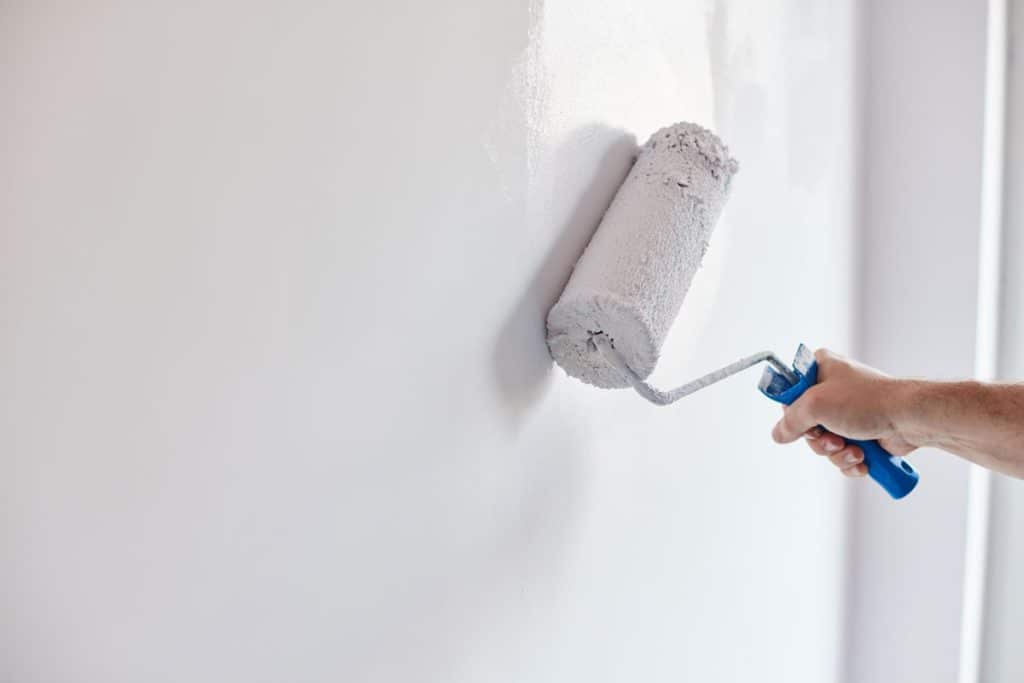
We may include affiliate links and curated AI content to highlight top design styles.
We don't recommend using anything shinier than an eggshell finish though, as more sheen can create a more noticeable glare. This is what we meant when we said it is highly unlikely you'll use a paint with a gloss finish for your ceiling. It'll draw attention upwards rather than towards the rest of the room.
Overall, it's more of a personal preference when it comes to choosing between a flat or eggshell finish for your ceiling. Consider how you want it to look and whether covering imperfections is important to you.
How Many Coats Of Paint Does A Ceiling Need?
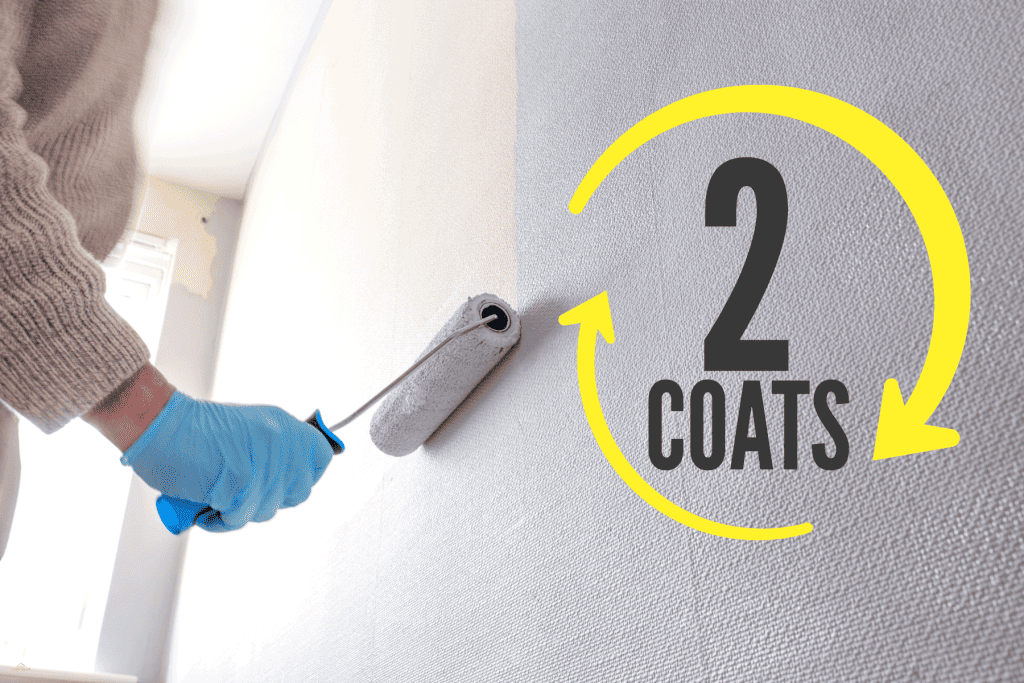
It can be tempting to only want to apply one coat of paint to your ceiling. After all, it would save you both time and money. However, skipping a second coat can leave you with a paint job that looks subpar. Second coats leave you with a smooth and uniform finish, and you'll most certainly have to do at least two coats if you are painting over a darker color.
There are some scenarios where two coats of paint might not be necessary. If you use high-quality paint, you may be able to get away with only doing one coat. Benjamin Moore paint is one type of paint that is recommended by professionals. It doesn't need two coats of paint often. Also, if you are painting over the same color it is also unlikely that you'll need two coats. The previous coat can act as your base coat.
Click here to see Benjamin Moore ceiling paint on Amazon.
Though it'll cost you less to only have to do one coat of paint, many times the situation will require you to do at least two coats. You can reduce the chances of needing multiple coats if you apply a primer first.
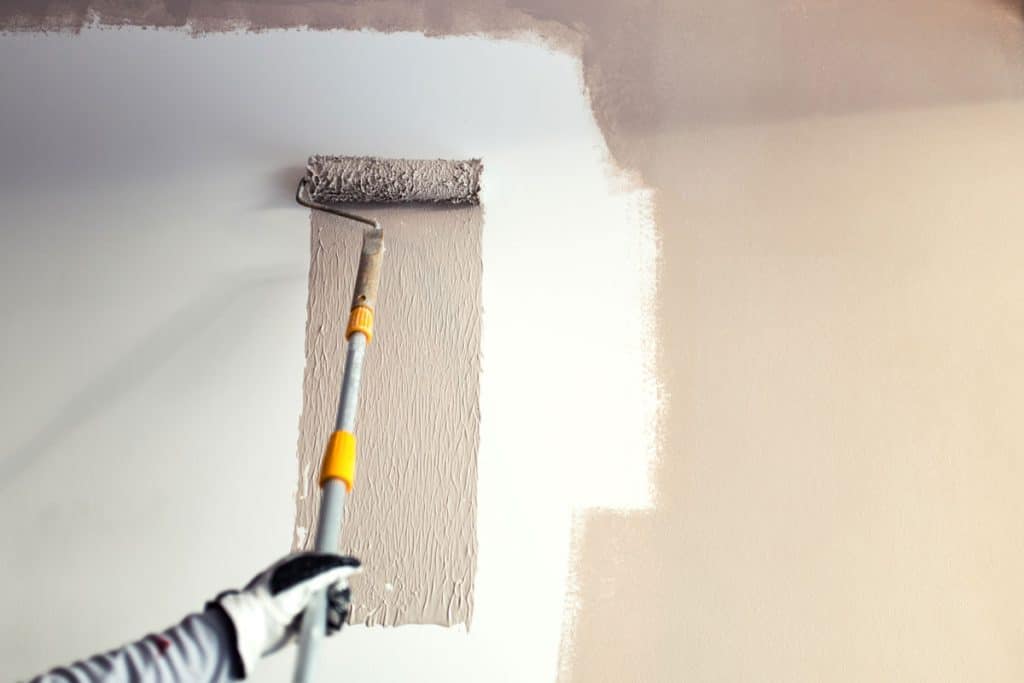
Remember to leave each coat to completely dry before applying your next to avoid having to do more. Not waiting until the first coat is dry can result in peeling, patchy paint. Follow any directions listed on the paint can for dry times between coats.
Can You Paint A Ceiling With Just Primer?
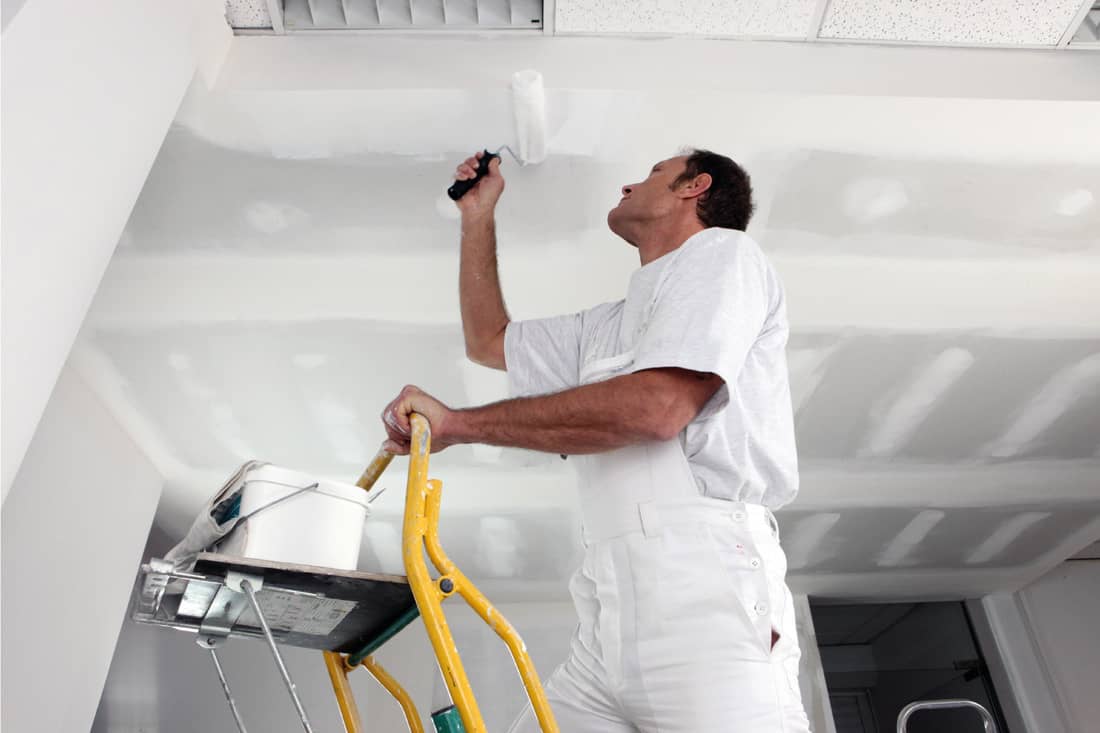
Since a primer is white and has a flat finish, you might be wondering if you can skip the painting stage altogether and just paint your ceiling with a primer. Well, technically you could, but it is highly unlikely you will get the result you want.
A primer is a primer for a reason and it is not meant to be used as a finishing coat. A primer will not seal as well from moisture and will begin to yellow and stain which means you'll have to repaint your ceiling faster. Its purpose is to seal and bond the finishing paint, and you'll likely still be able to see the seams and joints through the primer. It's not worth cutting corners if you have to deal with the problems caused by it sooner rather than later.
You should prime the ceiling and then follow that with at least one to two coats of paint.
Click here to see Kilz Latex Primer on Amazon.
Should You Paint The Ceiling Or Walls First?
Once you've decided to paint your entire room, you need to know where to begin. After prepping your room and materials, you should work from the top down. So, yes, you should paint your ceilings before your walls. Painting a ceiling is generally a quick and simple process. Even if you considered only painting your walls, it may be worth adding one more task to your to-do list and painting the ceiling first.
If you paint your ceiling first, you don't have to worry about paint dripping onto freshly painted walls. You'll be able to just paint over any unwanted paint marks on your walls.
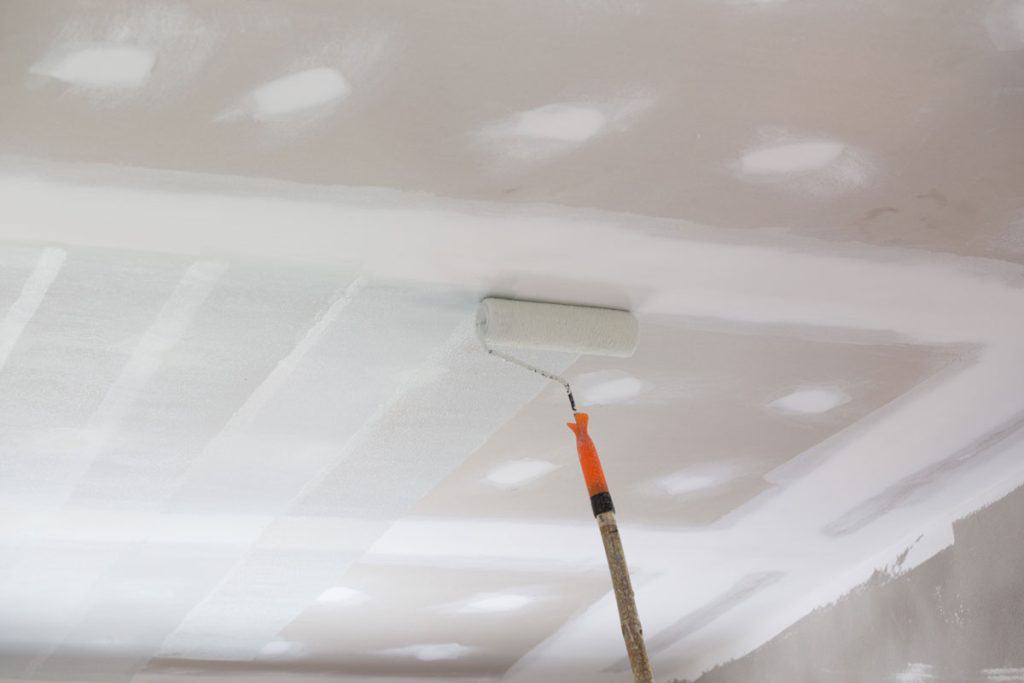
If you skip painting your ceiling altogether —and your ceiling hasn't been painted recently— the fresh wall paint will make any discoloration stand out, and you may find your ceiling looking more yellow than white.
Now that you know to paint your ceiling first, you may be wondering how to do that, and how to do it without leaving roller marks. Check out our other blog post for some tips: How To Paint A Ceiling Without Roller Marks [9 Pro Tips!]
Is It Okay To Use Ceiling Paint On Walls?
Let's say you purchased too much ceiling paint and you have plenty leftover. You may be wondering if you can put the excess to use and also use it for your walls.
As with painting your ceiling with primer only, you can, but you probably shouldn't. Wall and ceiling paint are not equal. They have different qualities, finishes, and thickness. Ceiling paint is thicker, so it doesn't drip to the floor while you're painting. Its qualities are less appealing to the eye than regular wall paint.
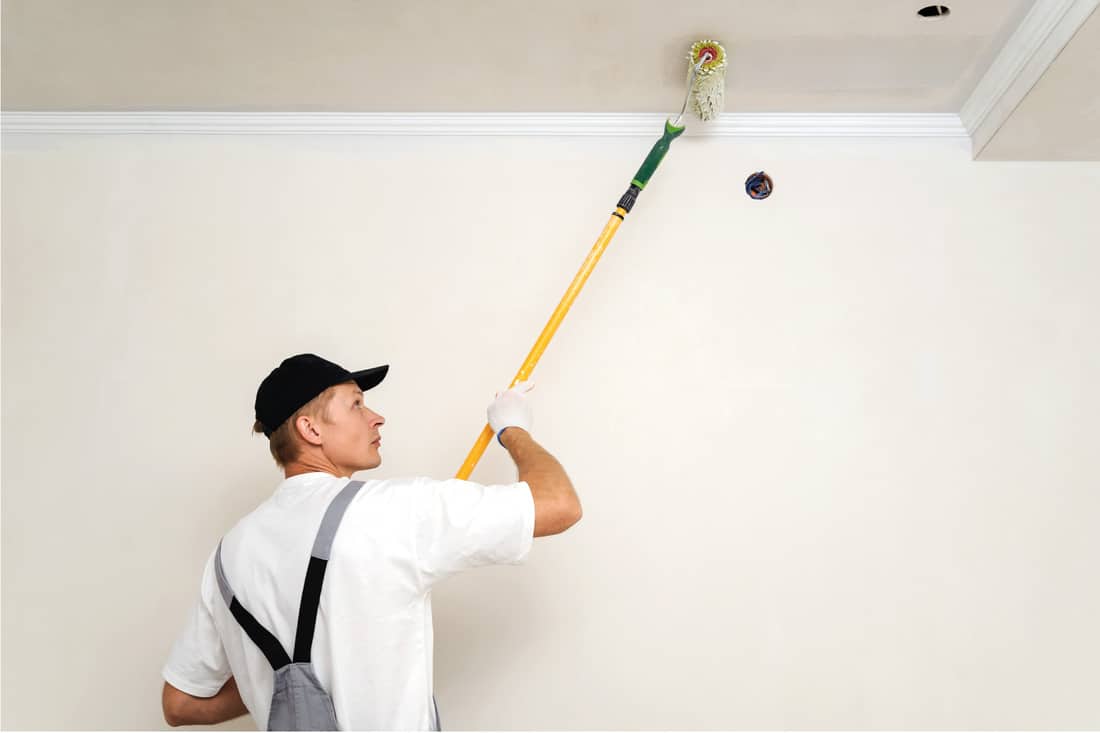
While we recommend flat or eggshell finishes for your ceiling, your walls will look better with something glossier. Semi-gloss and gloss paint will reflect light around your room and can make it feel more spacious.
Wall paint is also much more durable than ceiling paint. It has to be able to withstand many more interactions from people and furniture. Many interior wall paints are washable and easy to clean.
Click here to see Prestige semi-gloss interior paint and primer on Amazon.
So while you can paint your walls with ceiling paint if you wish, it's best to leave your extra ceiling paint as reserves and go pick out new shinier paint for the rest of the room.
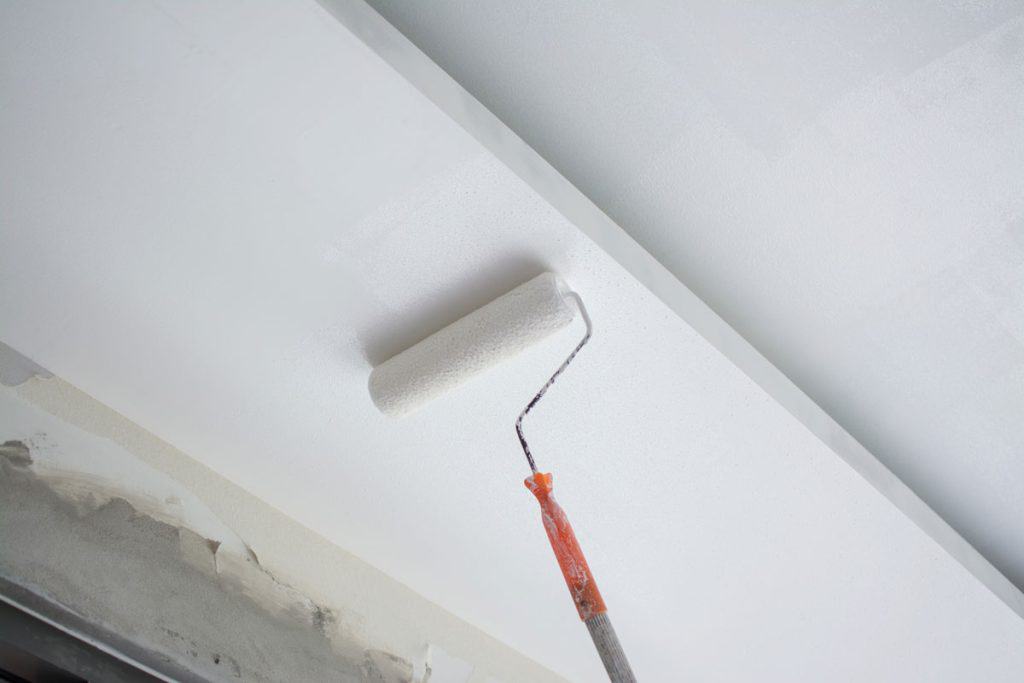
Final Thoughts
We've given you lots of things to think about, but don't worry too much about whether to choose flat or eggshell paint; there's not a wrong choice. Both will get the job done. Just think about whether you'd like a slightly more lustered finish. Happy painting!
If you need a step by step guide on how to paint a coffered ceiling, check out our other blog post here: How To Paint A Coffered Ceiling? [10 Steps]







